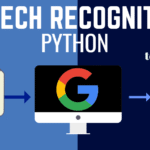Neuromorphic computing sounds like science fiction in Career — but in 2025, it’s becoming a real, rapidly growing field. At its core, it’s about building computing systems inspired by how the brain works. That means using spiking neural networks instead of traditional sequential processing. These systems are faster, parallel, and incredibly energy-efficient — perfect for AI at the edge.
You’ll find neuromorphic chips in research labs, experimental startups, and major tech firms looking to boost AI performance on low-power devices.
Where to Begin Career If You’re New
Don’t worry if you don’t have a clear roadmap. Most people entering this field don’t.
The key is to get comfortable with the intersection of a few disciplines:
- Neuroscience (just the basics)
- Hardware and circuits
- Programming
- A curiosity-driven approach to learning
Skim research papers, explore YouTube lectures, and join communities — even when it feels confusing. The context builds over time.
Essential Skills in Career You’ll Want to Build
To work in neuromorphic computing, these are the skills you’ll want to develop:
- Neuroscience Fundamentals – Understand how spiking neurons work, and the idea behind learning rules like STDP (spike-timing-dependent plasticity).
- Circuit Design Concepts – You don’t have to design chips, but you should know how analog and digital differ.
- Python (and some C++) – Most tools use Python; C++ shows up in performance-critical components.
- Time-Series Data Analysis – Neuromorphic systems produce time-based outputs. You’ll need to visualize and analyze these efficiently.
- Machine Learning Context – Even if different from deep learning, understanding training principles helps bridge concepts.
No one starts with all of this. Progress steadily.
Tools and Platforms Worth Exploring
Some key tools and platforms you’ll encounter:
- Intel Loihi 2 – The flagship neuromorphic chip with real-world potential.
- Nengo – Python library for building and simulating spiking neural networks. Great for beginners.
- SpiNNaker – High-performance research platform for large-scale networks.
- PyNN – Python-based interface that supports multiple backends.
- NEST – Commonly used simulator for neuroscience modeling.
Pick one and dive deep. You can explore others as you grow.
Roles and Career Paths in Neuromorphic Computing
Job opportunities in this field are growing. Here are some roles you might find:
- Neuromorphic Software Engineer – Develop and optimize spiking neural networks.
- Neural Hardware Developer – Work on the circuits and devices powering neuromorphic systems.
- Research Scientist – Innovate new architectures and applications.
- Edge AI Systems Engineer – Apply neuromorphic hardware in real-world sensor-based setups.
Startups, research labs, and big AI firms are all hiring in this space — and because it’s still niche, standing out is very possible.
Trends Shaping the Future
These trends are defining where the field is heading:
- Extreme Energy Efficiency – Neuromorphic chips outperform GPUs on power-per-inference metrics.
- Edge AI – Deploying smart models directly on devices near the sensors.
- Brain-Computer Interfaces – Using spiking models to interpret neural data.
- Improved Toolchains – Development environments are finally more user-friendly and robust.
Expect more real-world deployment and commercial interest over the next 3–5 years.
A Learning Path That Actually Makes Sense
Here’s a rough roadmap to get started:
- Understand the Basics – Learn how spiking neurons differ from artificial ones.
- Pick a Simulator – Start with Nengo or NEST.
- Build a Toy Project – For example, a digit classifier or spike-based timer.
- Follow Experts – Twitter, Mastodon, GitHub, and Discord are full of active communities.
- Get Hardware Access – Explore virtual Loihi or borrow access through academic programs.
- Apply Your Knowledge – Build something practical — even small experiments help.
Real-World Lessons Learned
In a field this new, mistakes are part of the journey:
- One engineer spent six months debugging a system that wouldn’t spike — all due to a config file typo.
- Another fried a dev board by flipping power polarity.
These aren’t failures — they’re rites of passage. Every error builds deeper understanding.
Why Now Is the Perfect Moment to Start
2025 is the perfect entry point into neuromorphic computing.
Why?
- The tools are finally approachable.
- Companies are hiring.
- Academic-to-industry transitions are becoming easier.
- And the field is still small enough that new voices can be heard.
If you’re curious and ready to tinker, now’s your time. Break things. Share your progress. Learn from the mess. The future of AI isn’t just deep learning — it’s brain-inspired computing, too.
Read more posts:- Implementing a Synthetic Voice Recognition System for IoT with Python and DeepSpeech



Pingback: Charity Platform with Tezos & Angular | BGSs